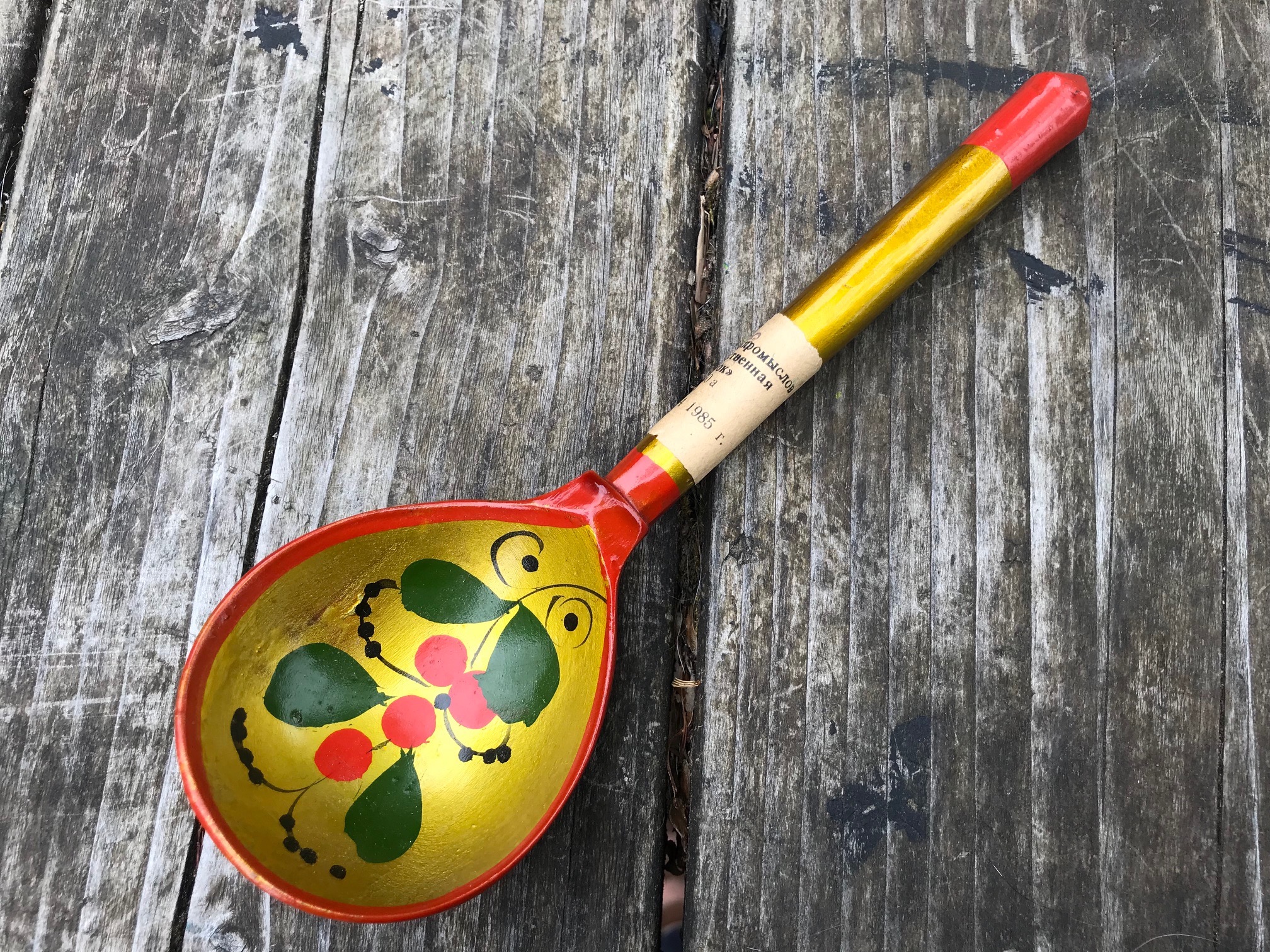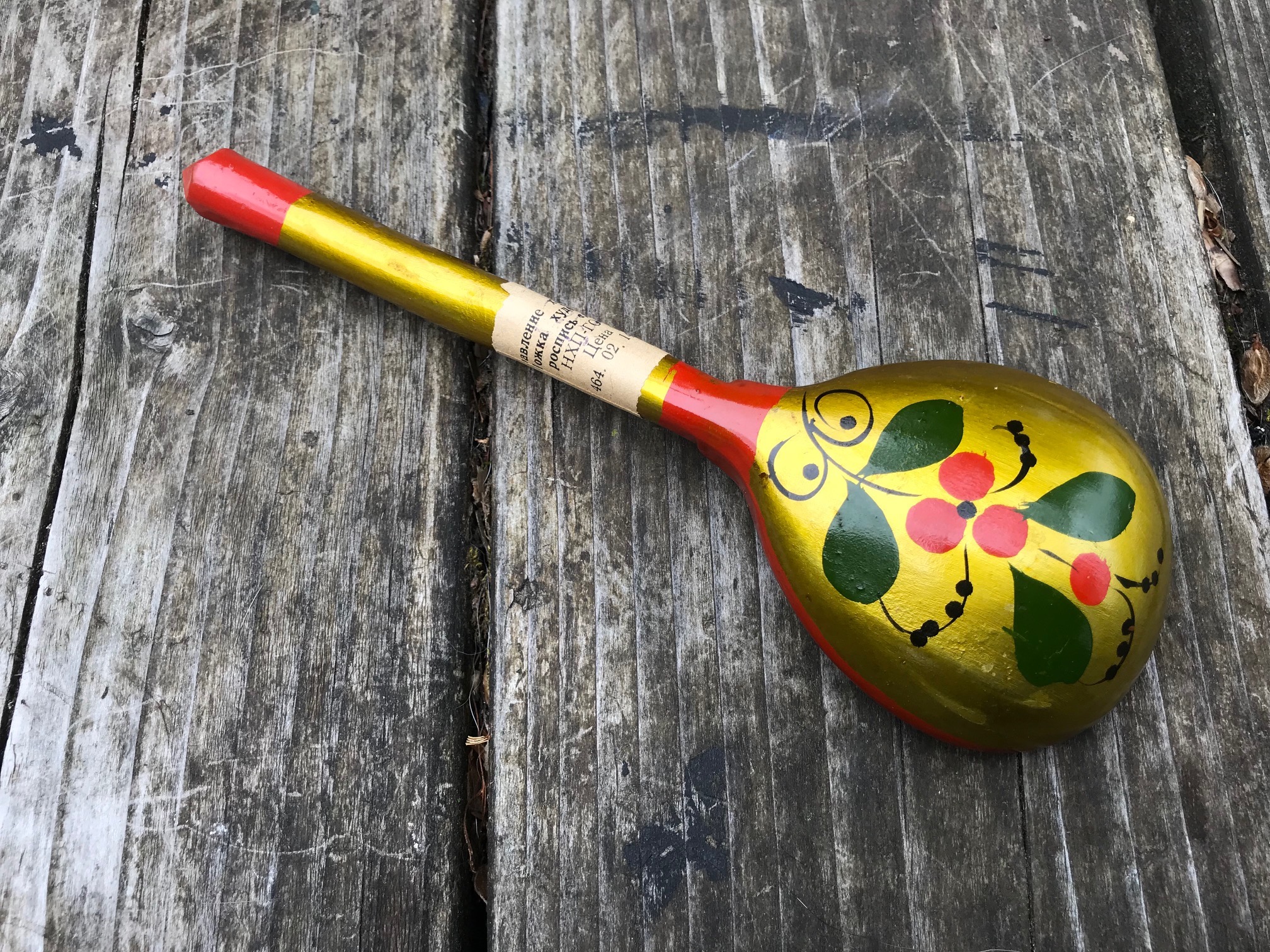#Leaded: Russian Khokhloma Wooden Decorated Spoon, 1985
For those new to this website:
Tamara Rubin is a multiple-federal-award-winning independent advocate for childhood Lead poisoning prevention and consumer goods safety and a documentary filmmaker. She is also a mother of Lead-poisoned children (two of her sons were acutely Lead-poisoned in 2005). Since 2009, Tamara has been using XRF technology (a scientific method used by the U.S. Consumer Product Safety Commission) to test consumer goods for toxicants (specifically heavy metals — including Lead, Cadmium, Mercury, Antimony, and Arsenic). All test results reported on this website are science-based, accurate, and replicable. Items are tested multiple times to confirm the test results for each component tested. Tamara’s work was featured in Consumer Reports Magazine in February 2023 (March 2023 print edition).
Testing with an XRF instrument revealed this decorative Khokhloma wooden spoon from Russia to have the following ingredients (in the painted markings):
- Lead (Pb): 1,994 +/- 67 ppm
- Mercury (Hg): 7,624 +/- 148 ppm
- Arsenic (As): 70 +/- 36 ppm
- Barium (Ba): 607 +/- 107 ppm
- Chromium (Cr): 489 +/- 73 ppm
- Bromine (Br): 327 +/- 47 ppm
- Zinc (Zn): 446 +/- 29 ppm
- Nickel (Ni): 35 +/- 12 pm
- Iron (Fe): 2,196 +/- 92 ppm
- Vanadium (V): 494 +/- 173 ppm
- Titanium (Ti): 447 +/- 238 ppm
I am not at all surprised by this — these are just intended as decorative pieces, though I think it is very important to re-emphasize that these must be strictly regarded/treated as “intended for decorative purposes only!”
You can buy these on Amazon today (affiliate link), although I do not recommend having these in your home — given they were positive for (high levels) of Lead AND mercury, plus they contain arsenic!
Unfortunately, I have seen one of these used for serving food before — specifically for scooping candied anise seeds (intended to be eaten as a dessert) from a bowl. Please NEVER use these for food purposes, and NEVER let a child play with them! Best idea: If you have one of these, put them in a shadow box and use them as a decorative piece, including a story about the artwork and the history of the piece on the box.
As always, please let me know if you have any questions.
Thank you.
Tamara Rubin
#LeadSafeMama
If you have a few extra dollars to spare and would like to support our independent consumer goods testing and Lead poisoning prevention advocacy work, please consider chipping in here.
Never Miss an Important Article Again!
Join our Email List











Thanks Tamara . Who would think such beautiful pieces of vintage folk art would contain such poisons ?
I’ll be careful .
If you have a list of poison free khokholoma spoons or the manufacturers that produce them , I be happy to have a copy .
Thanks Tamara! We have occasionally been using such spoon to just scoop flour for some meals we cooked and fried… We’ve been stupid. On the other hand, we have tested our kids and ourselves for lead ~5 times throughout the last 5 years and we did not find anything measurable (<1ug/dl)… We also had a bit of lead in our water system anyway (1-2ppb). The spoon was in good condition without any visible paint chip loss. I assume a tiny amount of lead/mercury contaminated dust had escaped to our food, or even volatilized and was breathed in the form of particulate matter during frying… Perhaps, it's becoming much worse when the paint deteriorates, or comes in contact with hot food/liquids. Anyway, we threw it to the trash after I noticed your message. Thank you!
Hello
Im struggling terribly to find cooking utensils
Like spatula, soup ladle….
I have brain cancer and my mother passed from lymphoma recently. My brother and father also have cancer. Can you PLEASE recommend a safe brand for cooking utensil set like mentioned above.
Thank you so much
Tamara,
Thank you! I just purchased some new khokhloma soup spoons on EBay but after reading this article I have reservations about using them. They say food safe but guess I should not use them for hot soup?
Please be so kind to let me know your opinion.
Barbara